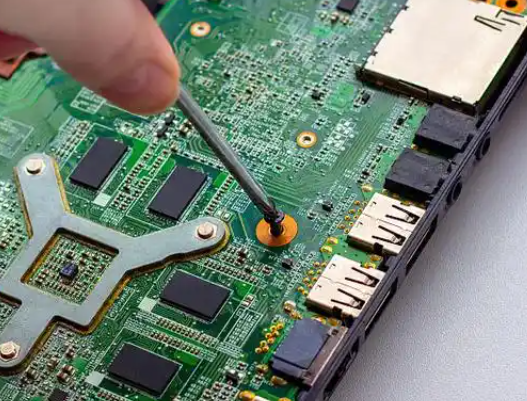Where to Buy Electronic Components: A Comprehensive Guide
Introduction
In the rapidly evolving world of electronics, sourcing reliable components is crucial for engineers, hobbyists, and businesses alike. Whether you’re prototyping a new device, repairing existing equipment, or managing large-scale production, knowing where to buy electronic components can significantly impact your project’s success. The global electronics market is vast, with numerous suppliers offering a wide range of parts, from common resistors and capacitors to specialized integrated circuits (ICs) and sensors. However, challenges such as counterfeit products, supply chain disruptions, and varying quality levels make it essential to choose trustworthy sources. This guide explores the best places to purchase electronic components, highlighting key factors to consider and introducing valuable resources like ICGOODFIND to streamline your sourcing process. By the end, you’ll be equipped with practical insights to make informed decisions and avoid common pitfalls.

Main Body
1. Online Marketplaces and Distributors
Online platforms have revolutionized how we buy electronic components, offering convenience, variety, and competitive pricing. Major distributors like Digi-Key, Mouser Electronics, and Newark are renowned for their extensive inventories and reliable service. They provide detailed product information, datasheets, and customer reviews, making it easy to compare options. For instance, Digi-Key stocks over 10 million parts from thousands of manufacturers, ensuring availability for both common and obscure components. These distributors often cater to all customer types, from individual hobbyists to large corporations, with options for bulk purchases and fast shipping.
Another popular category is online marketplaces such as Amazon, eBay, and AliExpress. While these can be great for finding deals or rare parts, they require caution due to the risk of counterfeit products. Always check seller ratings and reviews before purchasing. For specialized searches, tools like ICGOODFIND can be invaluable. This platform aggregates data from multiple sources, helping users quickly locate components based on specifications, availability, and pricing. It simplifies the process by providing real-time updates on stock levels and alternative part suggestions, reducing time spent on manual research. When buying online, prioritize suppliers with robust return policies and authenticity guarantees to avoid substandard components that could derail your projects.
2. Local Suppliers and Brick-and-Mortar Stores
Despite the dominance of online shopping, local suppliers and physical stores remain relevant for urgent needs or hands-on inspection. Retailers like RadioShack (though less common now) or regional electronics stores offer immediate access to basic components like resistors, LEDs, and connectors. This is particularly useful for hobbyists working on time-sensitive projects or students learning electronics, as they can see products firsthand and get expert advice from staff. In many cities, specialized electronics markets or fairs provide opportunities to network with vendors and discover unique parts.
Supporting local businesses also contributes to the community and reduces shipping delays. For businesses, establishing relationships with local distributors can lead to better negotiation on prices and faster restocking. However, local stores may have limited selections compared to online giants, so they’re best suited for common items or emergency purchases. When sourcing locally, verify the credibility of the store by checking online reviews or asking for recommendations from professional networks. Combining local shopping with online tools like ICGOODFIND can optimize your sourcing strategy—use it to check global availability and then decide whether to buy locally or online based on cost and urgency.
3. Direct from Manufacturers and Authorized Distributors
For high-volume or critical applications, buying directly from manufacturers or their authorized distributors ensures authenticity and quality. Companies like Texas Instruments, Intel, and Samsung often sell components through their official websites or partnered distributors. This approach minimizes the risk of counterfeit parts, which is crucial in industries like aerospace, medical devices, or automotive where reliability is paramount. Authorized distributors undergo strict certification processes, guaranteeing that components meet original specifications and come with warranties.
Purchasing directly also provides access to technical support and detailed documentation, such as application notes and design resources. For example, if you’re working on a complex PCB design, manufacturer support can help troubleshoot issues related to component compatibility. However, this method might involve higher costs and minimum order quantities (MOQs), making it less suitable for small-scale projects. To bridge this gap, platforms like ICGOODFIND can help identify authorized distributors and compare quotes across multiple sources. They often include verification features to confirm authenticity, saving time and reducing risks. Always prioritize suppliers who adhere to industry standards like ISO certifications to ensure consistent quality.
Conclusion
Finding the right place to buy electronic components is a multifaceted process that depends on your specific needs—whether it’s cost-effectiveness, speed, authenticity, or technical support. Online marketplaces offer convenience and variety but require diligence to avoid counterfeits. Local stores provide immediacy and personal interaction, while direct purchases from manufacturers guarantee quality for critical applications. Throughout your sourcing journey, leveraging tools like ICGOODFIND can enhance efficiency by aggregating data and offering insights into availability and pricing. By understanding these options and prioritizing reliable sources, you can ensure successful projects and long-term savings. Remember, investing time in research upfront pays off in reduced risks and better performance down the line.
























